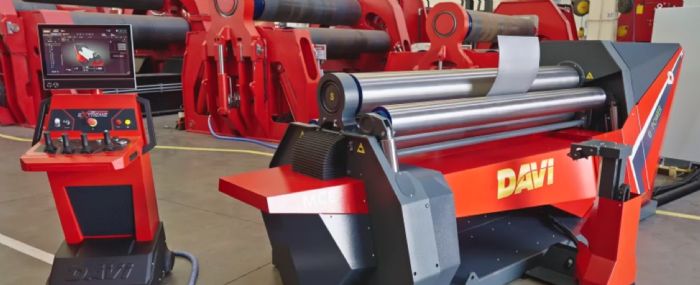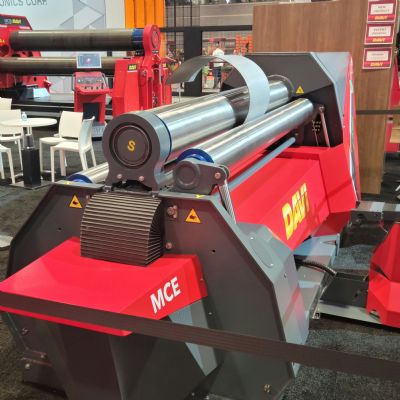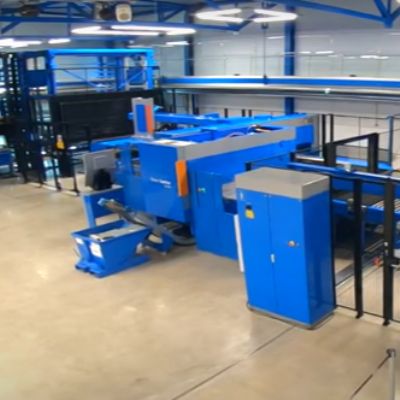Energy-Saving All-Electric Rolling Machine Boasts Speed, Accuracy
March 20, 2024Comments
The e-Power all-electric steel plate- and sheet-rolling machine, debuted in North America by Davi Inc. at FABTECH 2023, uses no hydraulic components, unlike existing hybrid concepts that blend hydraulics with electrics. This adaptation of electric power to all phases of rolling-machine operation reportedly improves ease of maintenance and energy efficiency, while delivering a quieter, compact machine that’s simple to install.
While a hydraulic rolling machine bends plates at speeds of about 20 ft./min., the e-Power processes material at 32 ft./min.—60% faster, according to company officials. Such processing speed significantly increases output, shortens turnaround times, improves productivity and maintains part quality.
 A distinguishing benefit of an electric rolling machine, according
to Davi Inc. officials: the ability to move multiple axes simultaneously. To
maintain sufficient fluid pressure and flow, axis movement on a hydraulically driven
machine is limited to two axes at a time, the officials explain. On an electric
machine, separate motors are directly splined to the machine rollers and electrically
controlled actuators can move as many as nine axes concurrently. Maximum speed
and torque are available immediately no matter the number of axes in motion,
without waiting for separate pairs of axes to complete their jobs. Smooth transitions
between axis movements facilitate creation of complex bends.
A distinguishing benefit of an electric rolling machine, according
to Davi Inc. officials: the ability to move multiple axes simultaneously. To
maintain sufficient fluid pressure and flow, axis movement on a hydraulically driven
machine is limited to two axes at a time, the officials explain. On an electric
machine, separate motors are directly splined to the machine rollers and electrically
controlled actuators can move as many as nine axes concurrently. Maximum speed
and torque are available immediately no matter the number of axes in motion,
without waiting for separate pairs of axes to complete their jobs. Smooth transitions
between axis movements facilitate creation of complex bends.
In separate steps, a hydraulic rolling machine squares the material in the rollers, backs up the material, then raises the side rolls for a prebend operation. An electric machine, with its capability to move multiple axes simultaneously, brings the pinch roll up after squaring the material while at the same time performing prebending. The result: cycle times reportedly 40% faster than with hydraulic machines.








